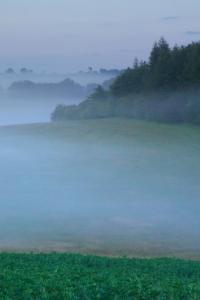HOW THE IRISH GAVE US ST. PATRICK’S DAY…AND HALLOWEEN
What we now know as Halloween began 2,000 years ago as the Celtic festival of Shamhain in Ireland. “Samhain” is the Gaelic word for “summer’s end”. For farmers and rural folk, pagans (the original meaning of pagan was not that of our current understanding, as those who aren’t Christian, but simply those who lived in rural areas, by the rhythms of nature), the holiday marked the beginning of the Celtic New Year. It was the transition from the light part of the year to the darker months of the year. The day was celebrated starting on sundown on October 31st and then throughout the day on November 1st.
 It was beloved- and is still beloved by some- as a time when the veil between this world and the spirit world is thinnest, and departed spirits can return to mingle with the those of the living.
It was beloved- and is still beloved by some- as a time when the veil between this world and the spirit world is thinnest, and departed spirits can return to mingle with the those of the living.
Celebrants would dress up in costumes, representing the various Celtic deities. Part of the folklore contains a story that Samhain is when the old God dies and the Crone Goddess mourns him deeply for the next six weeks. The popular Halloween image of an old hag stirring a bubbling brew from a giant black cauldron comes from the Celtic belief that all dead souls return to the Crone Goddess’ cauldron of life, death, and rebirth to await reincarnation.
 The jack-0′-lantern, also has its roots in Celtic legend. Based on a folklore tale about a forlorn ghost named Jack, jack-o’-lanterns were set outside during Samhain to guide lost souls-and to scare away evil ones. The difference in the United States is that we use pumpkins. The Irish originally carved out turnips, but when they brought their tradition to America, turnips were much harder to come by than were pumpkins. In fact, they discovered that pumpkins worked better.
The jack-0′-lantern, also has its roots in Celtic legend. Based on a folklore tale about a forlorn ghost named Jack, jack-o’-lanterns were set outside during Samhain to guide lost souls-and to scare away evil ones. The difference in the United States is that we use pumpkins. The Irish originally carved out turnips, but when they brought their tradition to America, turnips were much harder to come by than were pumpkins. In fact, they discovered that pumpkins worked better.
Handing out candy on Halloween to our costumed guests at the doorbell stems from the Celtic tradition of giving food and money to the costumed celebrants, just in case they were the physical incarnations of lost souls. In addition, when the kids say “trick or treat”, it springs from the custom of doing things to please the spirits or else risk some evil.
Around 700 A.D., when the Christian church began to spread throughout Ireland, the Church renamed the holiday All Saints Day (Nov. 1 precluded by All-Hallows Eve (Oct. 31st) and so it became to be known as Halloween. Like many other pagan festivals, the Christians adopted Samhain and made it a Christian event.
While other places in the world celebrate Halloween, it is most widely known and celebrated in the United States, Canada, Ireland, and the U.K.
 So, while the light outside my window is already dimming at 4:30 pm, and my Halloween candy is at the ready for the throngs of trick or treaters to descend upon my doorstep tomorrow evening, I can relish the spiritual connection with my distant ancestors in the “old country” who marked this as a holy and sacred time AND revel with the all the kids who are simply looking forward to a bag full of candy, getting dressed up, and being out after dark on a school night. As always, the sacred and the everyday live side by side…it’s important to acknowledge both.
So, while the light outside my window is already dimming at 4:30 pm, and my Halloween candy is at the ready for the throngs of trick or treaters to descend upon my doorstep tomorrow evening, I can relish the spiritual connection with my distant ancestors in the “old country” who marked this as a holy and sacred time AND revel with the all the kids who are simply looking forward to a bag full of candy, getting dressed up, and being out after dark on a school night. As always, the sacred and the everyday live side by side…it’s important to acknowledge both.
